Scope Creep: How to Proactively Manage Any Project

Sorry, there were no results found for “”
Sorry, there were no results found for “”
Sorry, there were no results found for “”
The key to successful scope creep management is finding the balance between setting boundaries and encouraging exploration.
By combining creative thinking and organizational discipline, teams are in a position to leverage scope creep to their advantage.
Added scope often results in more interesting projects for you and your team. So instead of getting discouraged, why not embrace scope creep to help us stay agile and adaptive? It’s an opportunity to grow our creative skills and come up with solutions that will take the project to the next level. ⚡️
Let’s talk about what causes scope creep and learn actionable tips to keep it in check without limiting innovation. Along the way, we’ll drop free project management templates and resources you can use, from small creative projects to major software updates!

Scope creep is a phenomenon that occurs when changes or additions to the original objectives of a project are made, either with or without the approval of key stakeholders and project managers.
In a positive context, scope creep can help to expand the parameters of a project, allowing it to become more ambitious and explore new possibilities. In a negative context, it can create significant delays, increased expenses, and dissatisfaction from clients or other stakeholders.
Gaining clarity when faced with evolving demands can be challenging. But if we remind ourselves it’s a necessary part of the process, we are in control. It’s important to stay focused and be curious when faced with changes in the project timeline or budget. For every disadvantage, there’s an advantage!
| ❌ Scope Creep Disadvantages | ✅ Scope Creep Advantages |
|---|---|
| Distracts from a project’s initial goal, making it challenging to prioritize tasks | Fosters collaboration between team members |
| Drives up costs and strains budgets due to new or modified requirements | Opens up possibilities for more creative solutions as ideas build on top of existing components |
| Introduces additional features which may cause conflicts between stakeholders with different interests | Uncovers unanticipated costs and resource requirements early and prevents surprises down the line |
| Attending to all requests could mean lower quality and details overlooked | Increases customer satisfaction since customers have the opportunity to have their needs met more effectively when they are included in the process |
| Leads to stakeholder dissatisfaction when their requests aren’t fulfilled | Insights to help refine the project and make it more efficient or cost-effective in the future |
| Extends the project timeline and leads to missed deadlines from adding new work or adjusting current workloads | Creates new business opportunities, as expanded scope often opens up avenues for generating revenue not previously considered |
Scope creep happens when a project starts to become more complex, unnecessarily large or takes longer than expected during the development process. It can stem from a lack of clear project requirements, objectives, and a formal change management process.
But even the best-laid project plans are at risk of scope creep. You can make all the right decisions with the best intentions. Then the unexpected comes along, and you have to navigate higher levels of ambiguity in the project’s scope. 🔍
The good news is if you spot the signs early, you’ll have better chances of preventing undesirable scope!
Let’s walk through the most common internal and external signs of project scope creep.
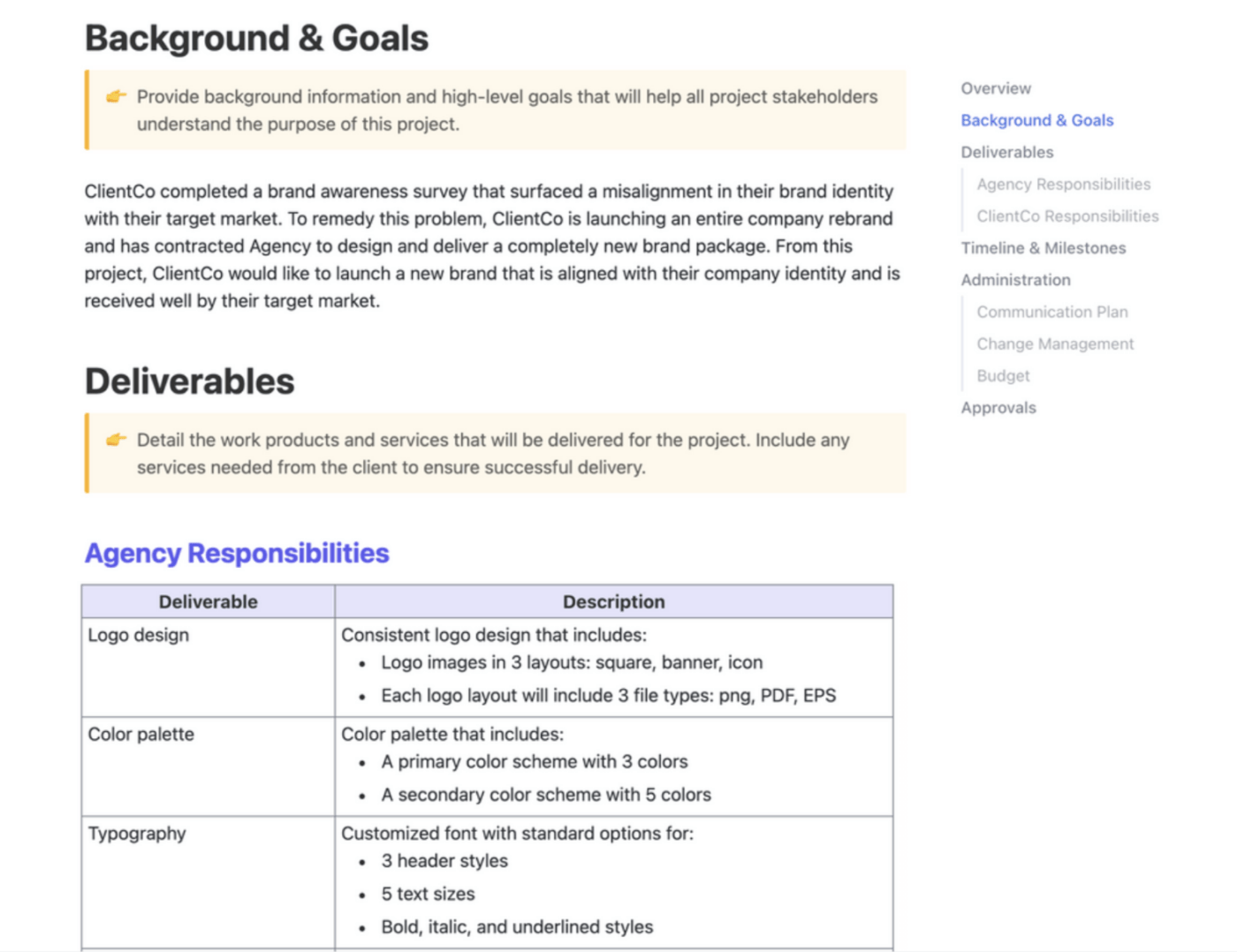
I wanted to reach out because the team is feeling a bit overwhelmed with the project and could really use another meeting. We’d like to take some time to get a better understanding of what the project entails, where we can find information, and what our roles are.
When responding to team meeting requests, be sure to consider the alignments with the project’s overarching purpose. Ask yourself, “What would this meeting contribute to the larger picture?”
Connect the dots and show how each agenda item has a logical link to the project’s mission. Additionally, get a sense of how long the conversation needs to last in order to reach their desired outcome. If you think it should be an hour-long meeting, try for 40 minutes! 🧑💻
Be flexible and use your best judgment when offering alternative ideas or solutions that could help the team move closer to their goal. And lastly, be sure to follow up with team members after each meeting to ensure that everyone is on the same page and supports continued progress toward the project’s ultimate goal.
Learn how to discuss the expected deliverables at your next project kickoff meeting!
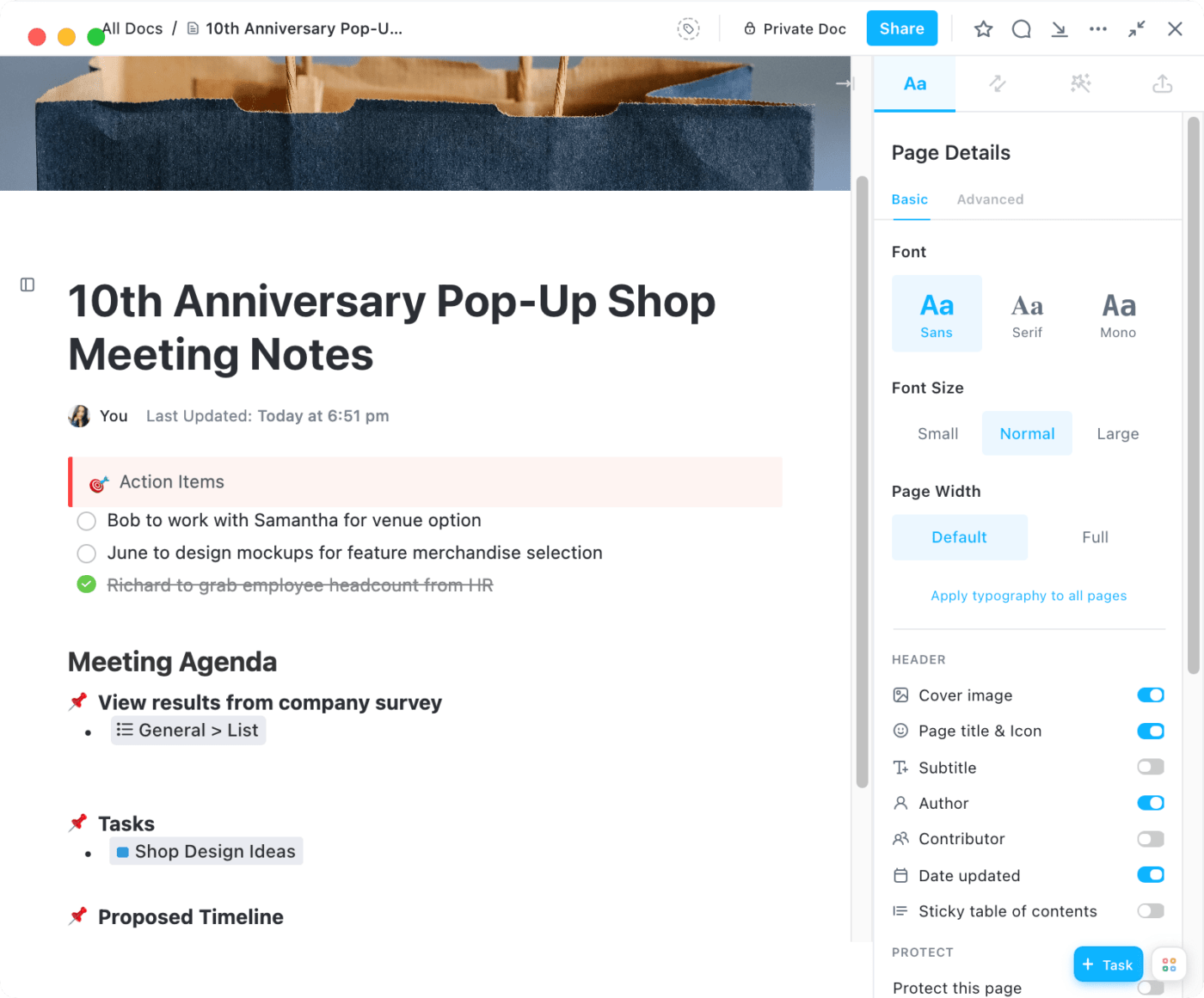
When a project has urgent and rushed tasks every few days, it significantly impacts the timeline because it puts an emphasis on speed and accuracy at the same time. This means that teams need to find ways to complete tasks quickly and with the highest level of quality. 🤩
This is often harder than it looks and can result in teams completing tasks beyond their estimated hours, running into roadblocks, or incorrectly estimating the amount of time it will take to complete the task in the first place. A revolving door for communication opens a team member’s workspace to constant dings and pings.
To minimize the number of fast-tracked tasks, work with stakeholders to set appropriate deadlines and manage their expectations. Then, document a process to filter requests and delegate tasks to team members. (But more on this later!)

Having clear documentation of every phase of a project is essential to its success. Without it, the team may overlook details and processes crucial to meeting deadlines and budget expectations. Stakeholders won’t be able to understand why certain decisions were made or track the project’s progress—making it difficult to make informed choices or evaluate success. 🏆
Well-written information and instructions allow new team members to get up and running quickly without taking away from the productivity of other project members or managers.
Poorly-defined project scopes cause headaches for everyone involved while negatively impacting deadlines and budgets. Ask questions on any unclear items so the project scope is clear, concise, and detailed.
Establishing guardrails to maximize your team’s productivity and office vibe is essential.
Elevating the client or stakeholder onboarding process is the first step.

Also Read: Project Scope Templates and Scope Document Examples
No project is immune from unexpected disruptions and events that can have a major impact on progress:
In these situations, using a contingency plan minimizes any potential damage so the project can remain on target as much as possible. It’s also important for all involved to be flexible and willing to make changes in order to keep the project moving forward.
When new stakeholders join a project late in the process, it may introduce complexity due to their lack of knowledge regarding decisions that had already been made.
This can lead to the introduction of new key performance indicators (KPIs) and project milestones, which could end up altering existing deliverables. (We’ll cover succession plans later!)
PRO TIP
Using a scope of work document helps you get a clear understanding of your team’s deliverables. Download ClickUp’s Scope of Work Template and use our free platform to manage any project!
The project manager is the first and last person involved in a project. Not only do they oversee every phase of the project, but they are the process keepers. 🔑
Processes are what keep everyone and everything organized—even in the most high-pressure situations. If you’re walking into a project without the minimum systems in place, leveraging scope creep will be difficult.
Here are seven tips to manage scope creep:

The email inbox is one of scope creep’s preferred doors to invite itself in and take over your project. The amount of time spent sending back-and-forth emails is taking away valuable deep work hours. You’re sending a list of questions, interpreting bits of information, and waiting for replies to put together a formal brief.
With a project intake form like ClickUp Forms, you are proactively protecting your team’s productivity around the clock.
Forms are predictable. Forms store data. Forms save money.
When a client or stakeholder is going through the Form questions, they’re seeing their own thought process reflected. This helps them flush out the required information you need as the project manager to understand their request before the team engages in any work. 👥
These questions are designed to give you some direction and inspiration for your project request form:
Bonus: Statement of work templates!
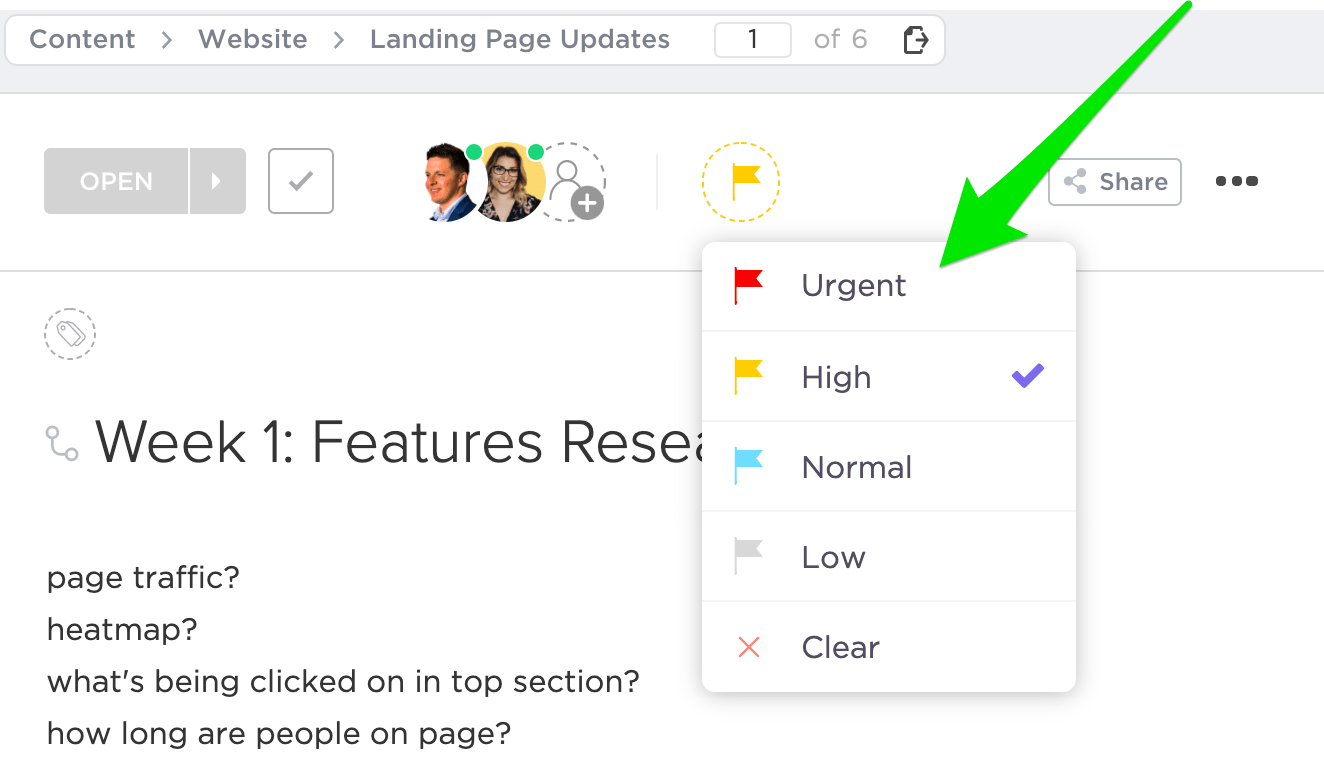
When all tasks have the same priority level, it can be difficult for team members to know which tasks to focus on first. Assigning priority levels allows the project teams to organize work based on their individual knowledge, experience, and abilities so that each task is completed in the best way possible. 🎯
Priorities remind us to look beyond the immediate moment and plan for the future. By outlining our top objectives, we create clarity and focus on how to achieve our long-term goals. This can help us prioritize tasks, weed out distractions, and stay motivated when pursuing important goals.
In order for a priority system to make a positive impact across cross-functional teams, make this a key process in your workflow. Communicate to your project team the priority flags that will help them manage their energy and time on the right tasks every day.
However, if you’re managing a complex project with multiple moving parts, manually updating every task is not a good use of your time. (Hint: Scope creep!) This is where automation comes in. 🤖
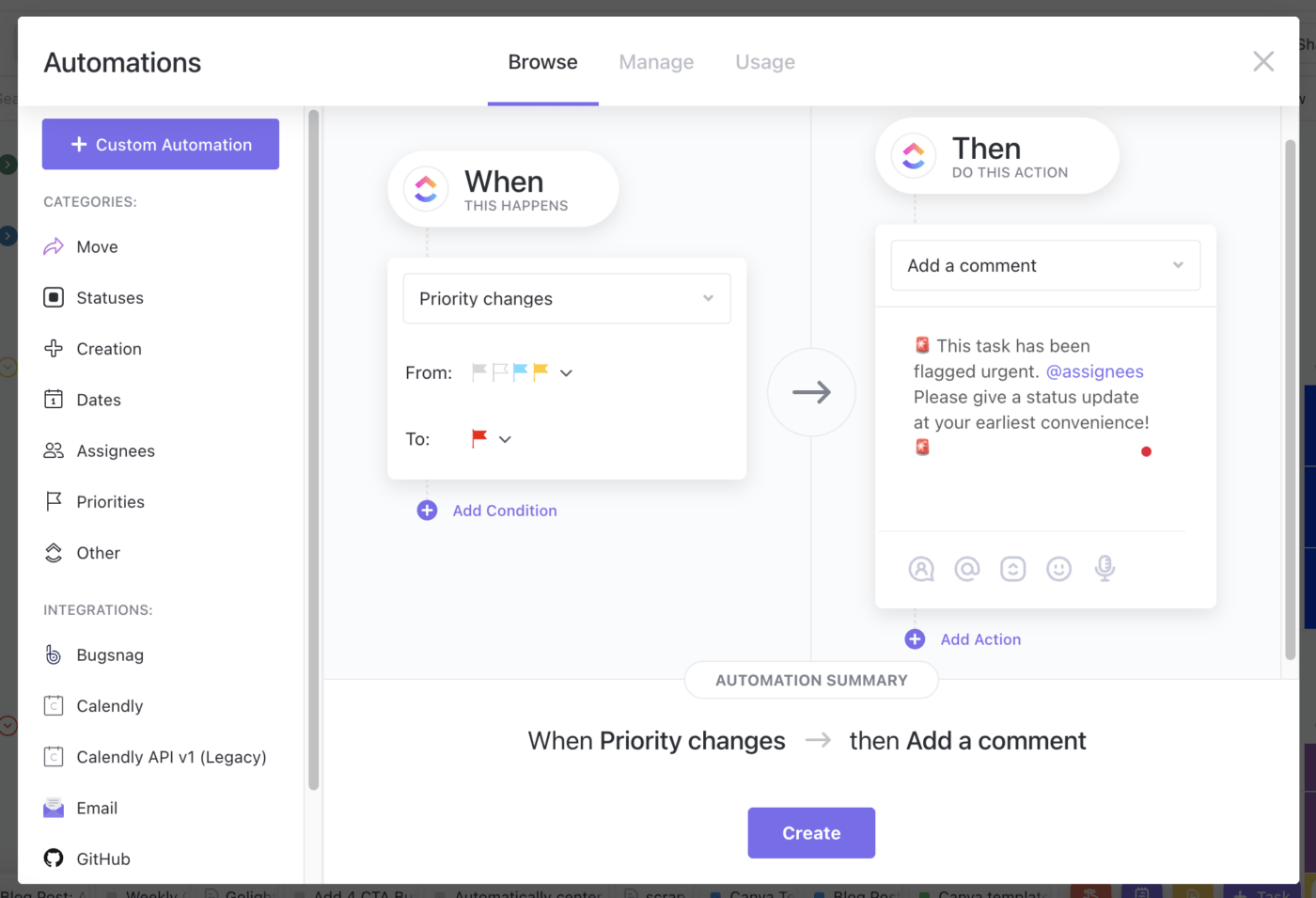
The mundane and administrative tasks aren’t outlined in the project plan, so they’re often taken for granted. Manually filing, organizing, and updating tasks every day adds time to a project.
Automation lets project teams focus on creative work, so they aren’t bogged down in tedious—but necessary—repetitive tasks. 🔁
New to automation? Here’s how to get started:
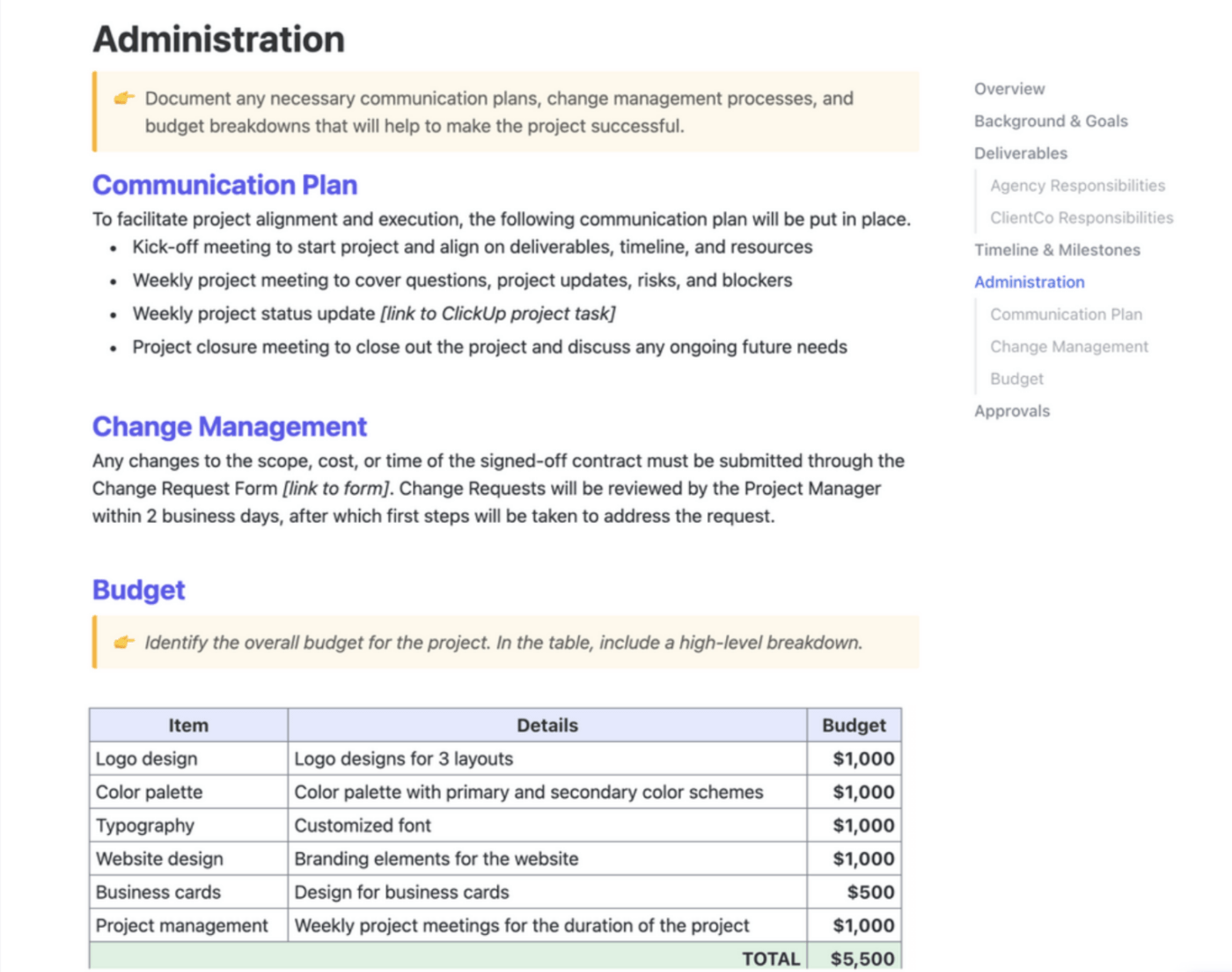
A change control process is an essential part of project management and involves setting up standard procedures for handling change requests. Without this process, scope creep will add confusion to the project.
Here’s how to establish a change control process:
1. Develop a change request form: Begin by creating a form that includes all the details required to submit a change request
2. Identify a change control committee: Select individuals responsible for approving or rejecting the change request. This committee should include team members from multiple departments that may be affected by the change
3. Create change control workflows: Determine what steps need to be taken to evaluate a change request, such as collecting feedback from relevant stakeholders, assessing the risks of the proposed change, and considering its effect on the timeline and budget
4. Implement a change tracking system: Set up an efficient system to track each request along with documentation such as approvals, modifications, action items, and the impact
5. Document and share guidelines: All stakeholders involved should have access to the documentation
6. Communicate to your team the changes: Explain why the change is necessary to the project, how it’s going to make their work better, and where to find the change resources
Bonus: Change management software!
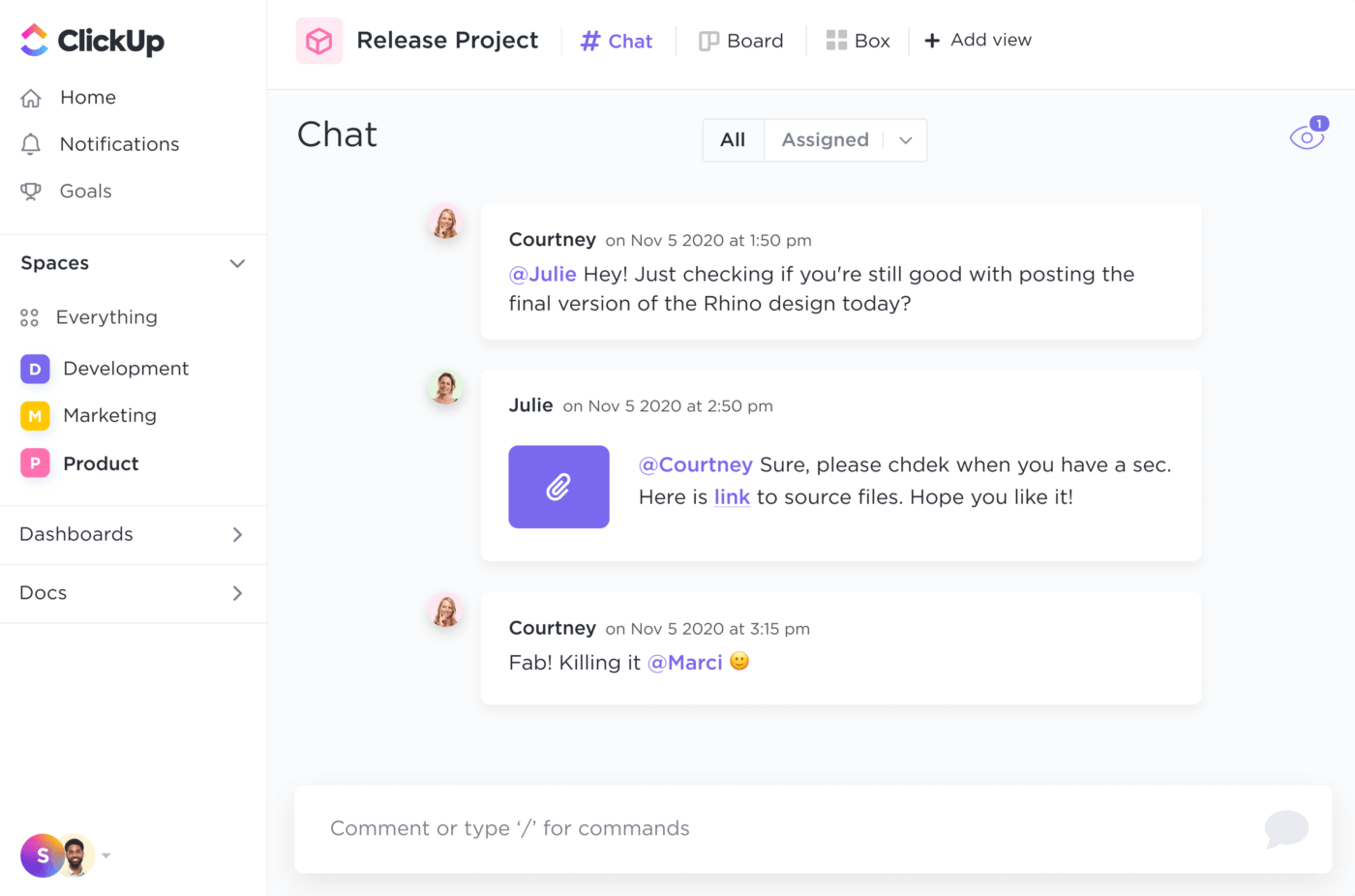
Having a team actively involved in decisions and strategy is essential for successful project management. When all members of the team are able to provide their input, it creates a sense of ownership and increases their commitment and motivation toward the project.
Multiple perspectives can lead to new solutions and creative ideas. Inviting the team into decision-making and strategy discussions allows for faster achievement of project goals. It also makes it easier to have conversations around difficult decisions because they were given context firsthand. 🤝
There are challenges beyond the skills of a project manager to solve. Lean on your team’s expertise and guidance to delegate the right work. They’ll inform the level of effort needed and minimize scope creep!

Getting timely feedback ensures teams can get ahead of any issues before they develop into major problems at the most critical times in the project—reviews.
If we don’t establish checkpoints along the way, the chances of scope creep increase.
An achievable feedback cycle should be a dialogue between the project manager, team members doing the work, and stakeholders.
The result? A structured framework to evaluate progress, discuss changes, and determine if new objectives are required.
These 5 scenarios are examples of scope creep in project management:
Now that you have an on-tap resource of tips to leverage scope creep, what’s next?
Mark the start and end of your day in ClickUp—the all-in-one productivity platform where teams come together and crush operational efficiencies. 💪
The scope of work templates and resources don’t stop here! We have a vast Template Library for every use case, a detailed online Help Center, webinars, and ClickUp University to help you use the platform to its fullest extent!
© 2025 ClickUp